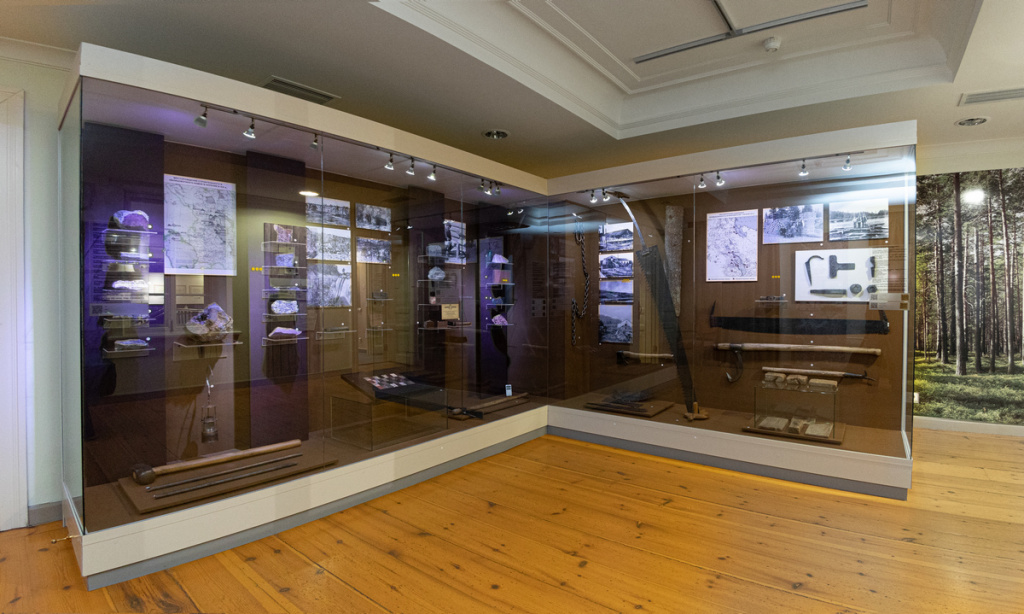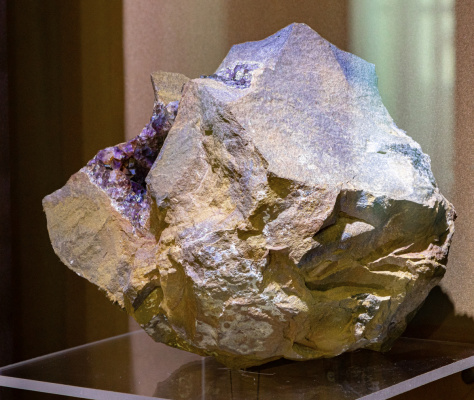 The time of Peter the Great's reforms has changed a lot in the economic life of Karelia. The development of the natural resources in the region is progressing to a higher level and this includes not only metallurgy. The new capital of Russia that is buildind near Karelia – St. Petersburg - requires construction supplies: wood and stone
The time of Peter the Great's reforms has changed a lot in the economic life of Karelia. The development of the natural resources in the region is progressing to a higher level and this includes not only metallurgy. The new capital of Russia that is buildind near Karelia – St. Petersburg - requires construction supplies: wood and stone
The Northern Lake Ladoga region has been known since ancient times as a place of extraction of construction and trim stone – granite, gabbro-diabase, marble. Ruskeala marble breaks acquired special significance at the turn of the XVIII-XIX centuries. Ruskeala marble was decorated with temples and palaces of St. Petersburg, fountains of Petergof, columns of Tsarskoye Selo and Gatchina. Ruskeala marble became widely known due to the construction of St. Isaac Cathedrall The architect Auguste Montferrand visited Ruskeala a twice, personally selecting the stone for the cladding of the temple.
Marble was also developed further north, on the shores of Lake Onega. The Tivdian marble was discovered in the first half of the XVIII century, and from that time its industrial development began – breaks in Tivdia and Belaya Gora (modern Kondopozhsky district of Karelia). Front of buildings and building interiors of the Winter, the Taurida and Marble Palaces, Kazan and St. Isaac's Cathedrals, halls in Peterпof and Tsarskoye Selo are decorated with this marble. Karelia is also famous for its aposandstones, in among which rocks in quarries near the village of Shoksha have become particularly famous. Monophonic dark crimson aposandstones that were called "Shokshinsky porphyry", were especially appreciated. The most famous example of the using of aposandstones from Shoksha is the coffinette of Napoleon Bonaparte in Paris.
In the second half of the XVIII century numerous water—powered sawmills are appeared in the Government of Olonets , based on the private capital of trading peasants, merchants and burghers of the region. The leading position in lumber camps in Karelia was occupied by the large St. Petersburg and Arkhangelsk firms of the Belyaev, Gromov, Rusanovs. Representatives of foreign capital also played a significant role. A significant amount of "green gold" was harvested by local dynasties of timbermen. One of the best enterprises at the beginning of the twentieth century were considered the Gromov sawmill in Solomennoye and the factories of the Karelian Pomorye.
People tried to organize production based on deeper processing of wood raw materials together with sawmilling in the Olonets province in the XIX century. It is match-manufactures, a cardboard box factory and a turpentine factory. The tools presented in the exposition give an idea of the daily work of the workers of Karelian sawmills: saws, a hook and a chain for a raft, a forester's stamp for the selection of a drill forest.



